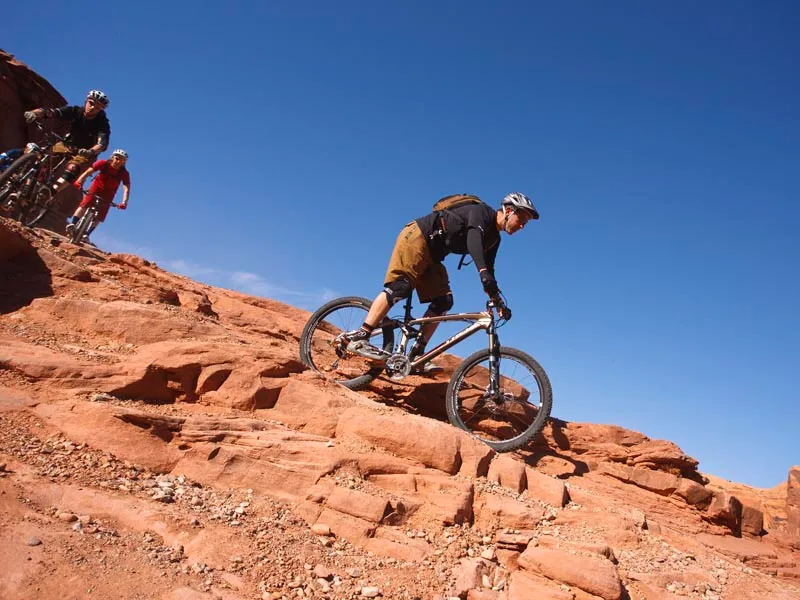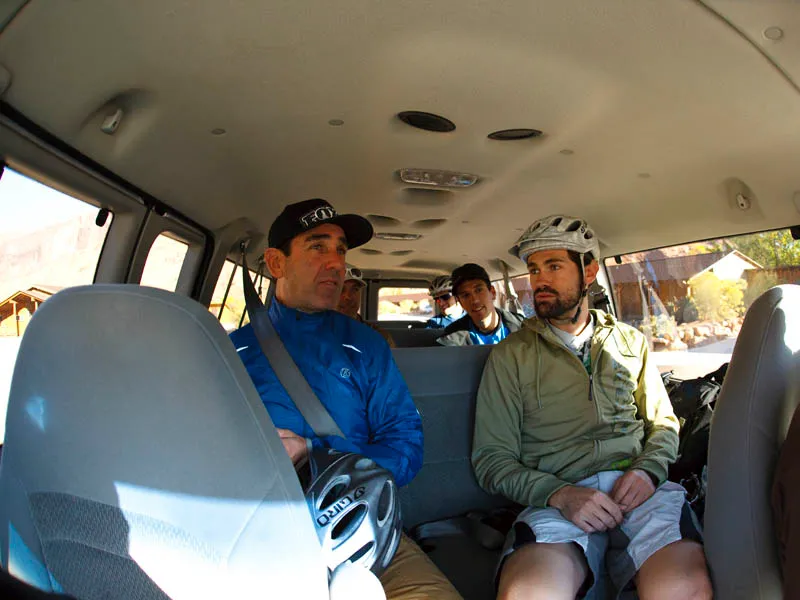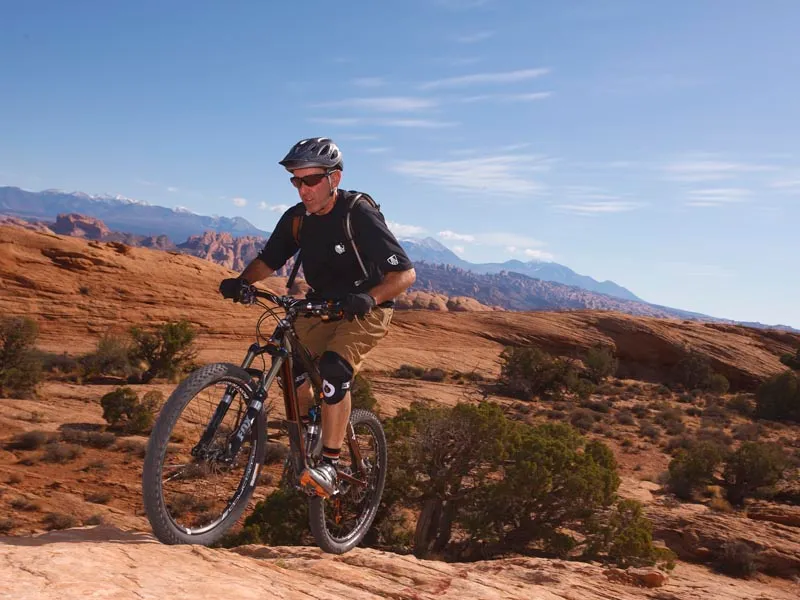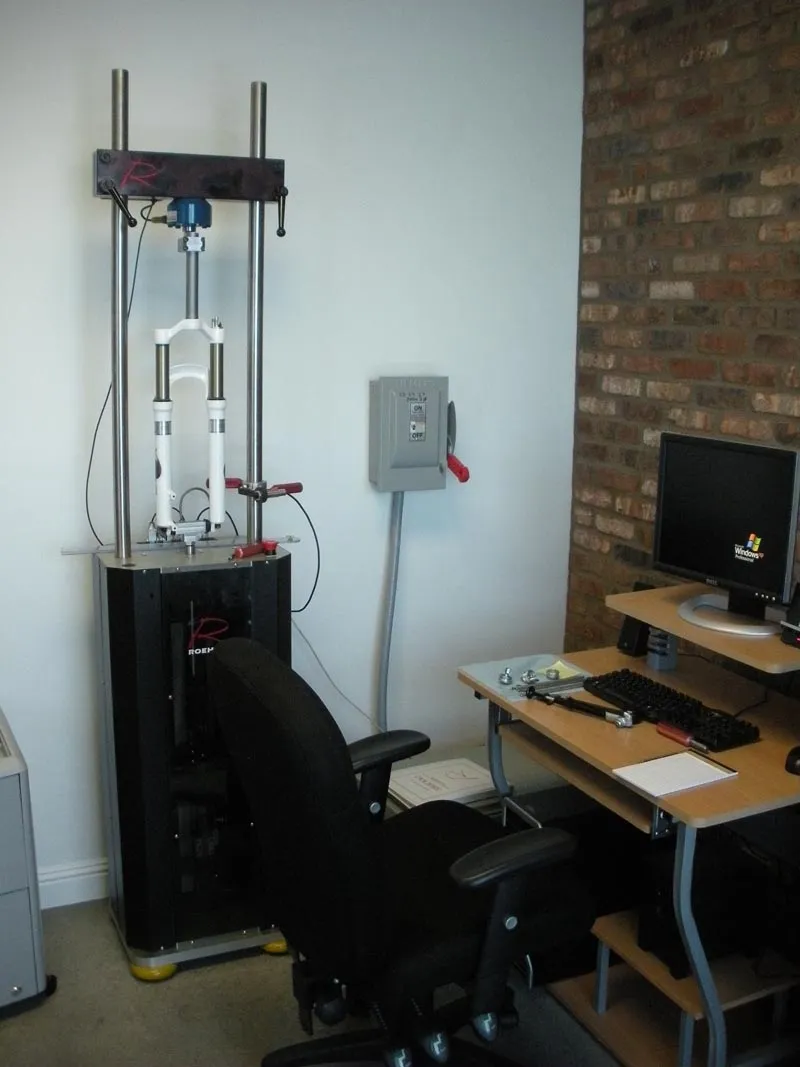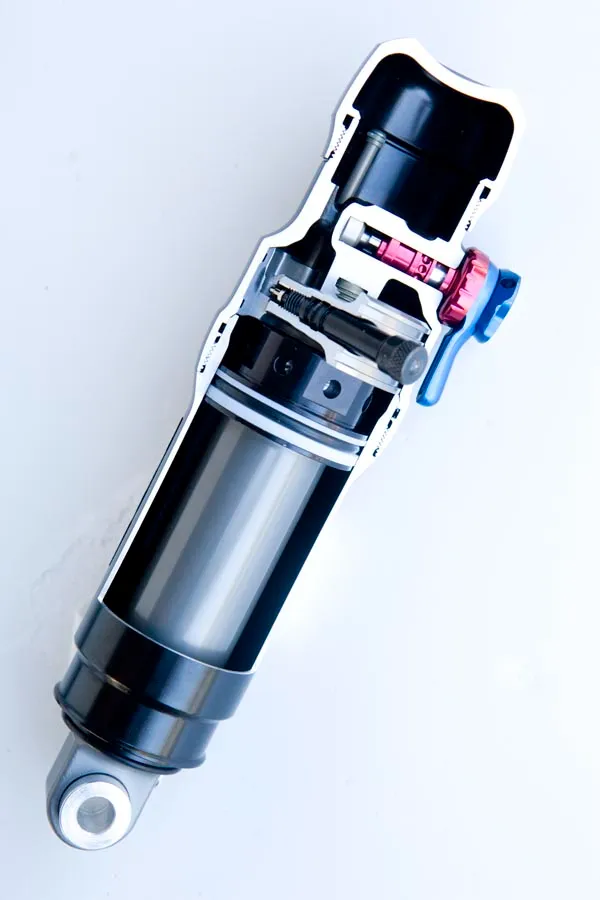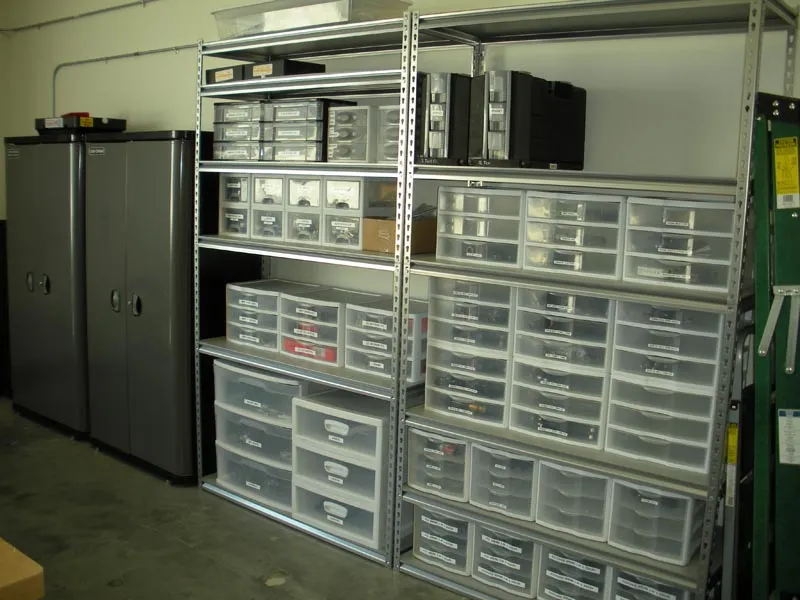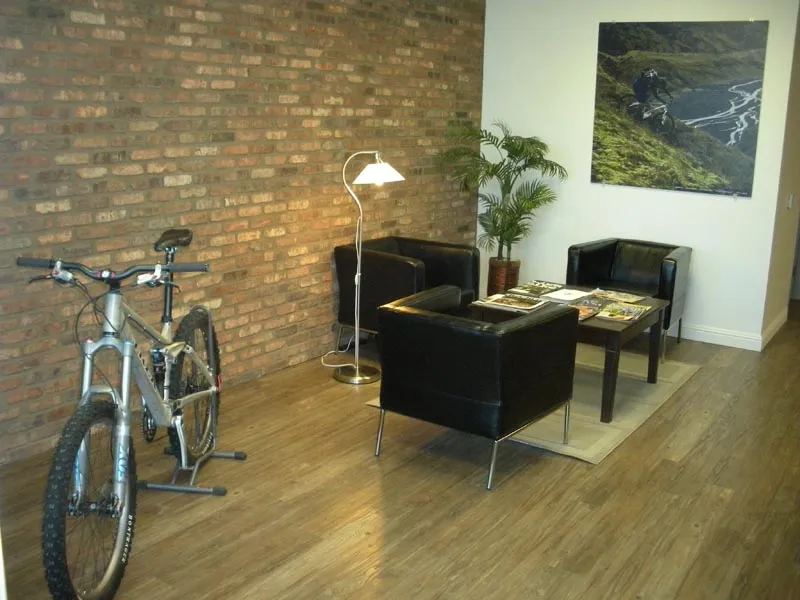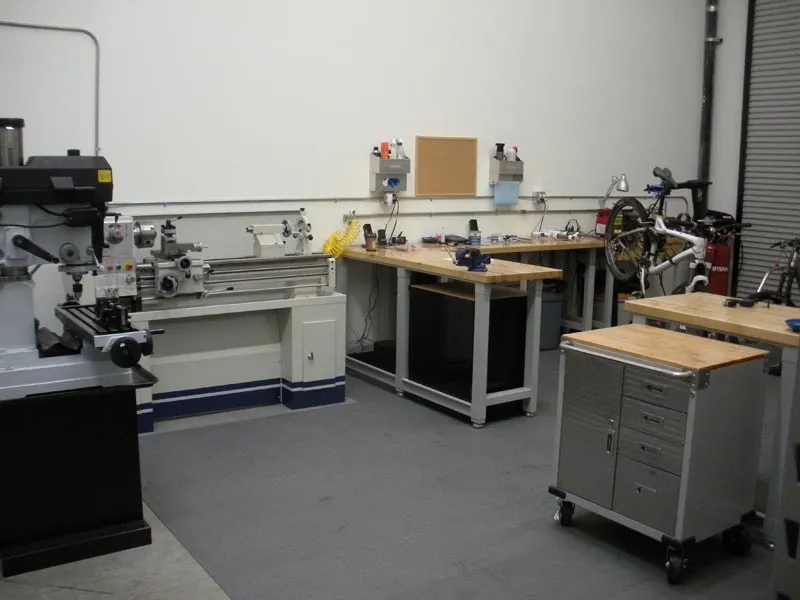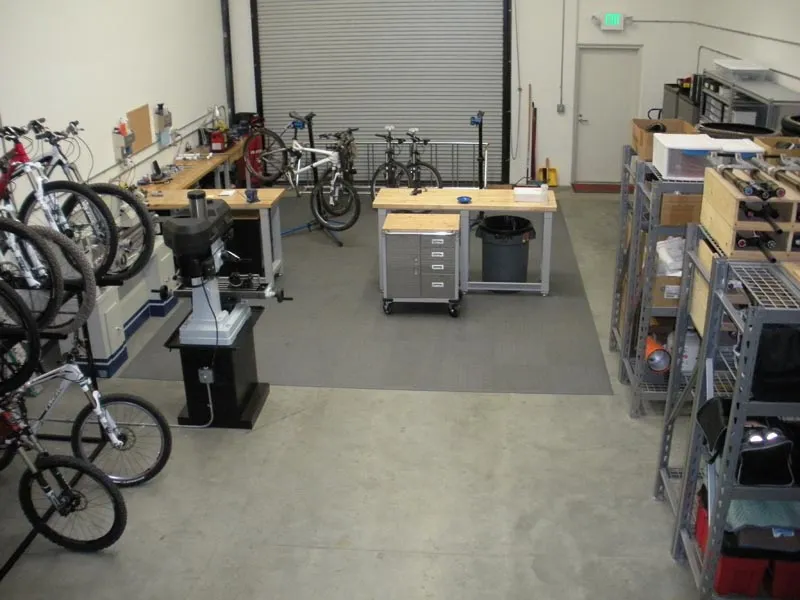Over the last few years, Trek bikes have grown a new exciting fan base. They still make stunning aluminium and carbon fibre cross country bikes, but the gravity side of the market was never quite right - until they employed Jose Gonzalez…
He’s not the Swedish indie and folk singer, but the man who helped Trek bring a bit of flair back to their bikes. We know him as the suspension guru with ants in his pants - the man just doesn’t stop thinking, refining, designing and improving. Combined with an excellent in-house team of designers, tech-heads and product managers, Jose’s expertise has helped shape Trek’s onslaught on the ‘right here and right now’ market of all mountain, freeride and downhill - and they’ve taken it by storm.
The Remedy was an instant hit when it was launched two years ago, and the Session DH frame that followed shocked the market with its off-the-shelf race spec, weight and performance. The recent Scratch has filled the gap between the two, catering for harder all mountain cyclists through to light downhill riders.
You’d think a far bigger team was behind such impressive bikes, but Jose heads up a small special design unit in Santa Clarita, California and spends a lot of his time refining out on the trails.
Jose believes in first-hand feedback, from research and design work to the rider's perspective. He’s one of the fittest and most talented tech-heads we’ve ever ridden with - and no doubt a huge part in the recent success of Trek’s excellent bikes…
It’s refreshing to see tech-heads practising what they preach - you’re definitely up there with the fastest.
I grew up racing motocross, so I’ve been on two wheels for most of my life, but mountain bikes truly are my lifestyle and passion. I spend a lot of time riding and I’m very motivated to do it regularly. Even though I turned 50 this year, I still feel I’m progressing and improving as a rider. It’s important to be well-rounded, so I spend as much time pedaling as I do descending and riding technical terrain, on everything from trail bikes to downhill machines.
And now I get to share this passion with my 14-year-old son, who loves the gravity side of the sport. It doesn’t get much better than this.
I actually didn’t start mountain biking until I was 33. It was around 1993 and I’d stopped riding due to getting married and the birth of my daughter. But I got the bug to start riding again and I wanted to give mountain bikes a shot, so I bought a bike and a few months later I was totally hooked. Nearly 17 years later, nothing’s changed…
Before Trek you were director of research and development at Manitou Suspension…
After getting into mountain bikes, I started to get more and more passionate. I started racing a bit and that drove my desire to work in the industry. I'd been involved with motorcycles for 26 years at that point -10 of those at Kawasaki - but I'd found a stronger passion in mountain biking and wanted to change gears.
I met a couple of the guys who worked at Manitou when I started riding mountain bikes, and in early 1995 they told me that they were looking for a manager for their newly created race program. It turns out that was right up my alley, because that’s what I had been doing for the previous six years at Kawasaki.
I asked Zapata, Mike McAndrews and Jim Felt - all of whom were my friends from our motocross days - what they thought of the cycling industry since they made the switch a few years earlier. They all told me to do it.
One thing led to another and in April of 1995, I left Kawasaki and started at Answer Products as the Manitou Race Program manager.
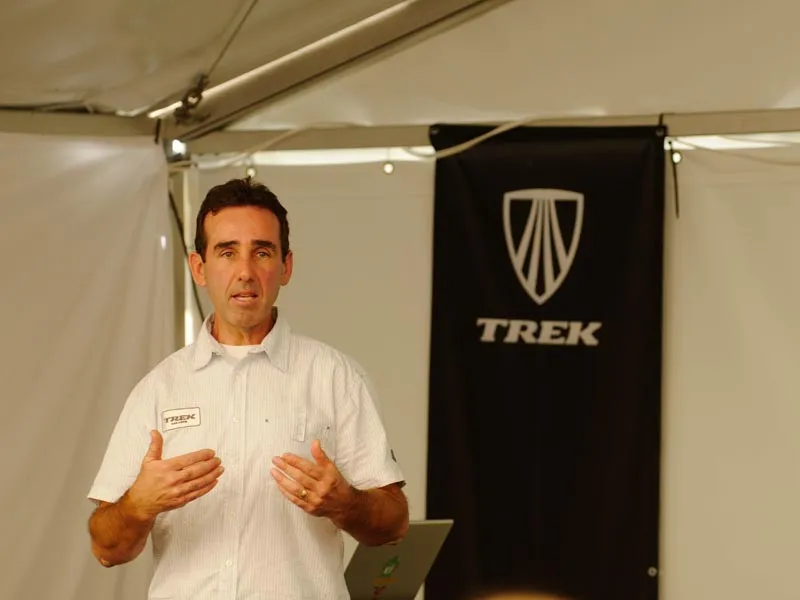
Jose himself.
We were so successful at developing technologies and tuning products through the Manitou Race Program that in 1997 we where given the responsibilities for research and development along with racing. That’s when I created the MRD program (Manitou Racing Development). It was around 1999 that I officially became the director of research and development. I held that role until I left the company in May 2006.
You developed the twin piston chamber cartridge, right? That was pretty revolutionary back in the day…
I did - that was my first big innovation. It dates back to the days when I attended every World Cup and we couldn't keep cartridges together in downhill racing.
On top of them blowing up, the single-piston closed cartridges didn't work very well when they were staying together. I looked at the system and thought, "There has to be a better way than a closed cartridge without going to an open bath."
It was on my flight to the Mont Sainte Anne World Cup that it hit me. I was so excited that when I got to Sainte Anne, I immediately jumped in the back of the trailer and started to make a test mule, using a drill motor as a lathe!
Andrew Shandro was the first rider to experience the twin piston chamber test mule prototype at
in 1996. Andrew and I have been working together for quite a while now, and we're good friends too. I can’t believe he’s actually put up with my crap for this long!
Manitou had a good relationship with Trek - especially when Shandro was riding all sorts of weird high pivot things, and then the burly old Session 10. How much input did you have?
The Session 7 and Session 10 development was what started my relationship with Trek. That was when I was responsible for managing the Manitou rear shock program and we worked very closely with Trek to develop the shocks for those bikes.
The Manitou Revox was specifically designed for the Session 10 first, and then developed for other bikes. My involvement with the Session 7 development was mostly tuning SPV shocks for that system. But on the Session 10 development, I worked very closely with Dylan Howes on the leverage ratio and rate, then we designed the Revox for that system.
Was that when Trek asked you to join them?
I really got to know Joe V, John Riley and Dylan Howes during the Session 10 development. We spent a good amount of time together at test camps and meetings, and they were great guys with a lot of passion for mountain bikes. I could also see the potential Trek had to be a market leader in mountain bikes, if they just added a few missing pieces to the puzzle.
It was during one of the test camps in NorthShore that Joe V (Director of Products) and I began to discuss me joining Trek. He was very interested and we began to discuss the details. Four or rive months later, it came to fruition.
You work at the Santa Clarita facility. Is there a big team there, and what exactly does the centre do?
Greg Buhl and I work full time at the Santa Clarita research and development facility, so we have a fairly lean operation. However, two people go a long way in a dedicated, intensely focused environment and it probably equates to having four in a large corporate environment. We don’t get absorbed in the ‘daily business grind’ nearly as much. Plus, our model is set up to leverage the resources at Fox.
I truly believe that this business model and intensely focused environment have been important in accomplishing as much as we have in such a short time.
We're also part of Trek’s Advance Concept Group, which comprises about 20-25 engineers, including Dylan Howes. Dylan is based in Waterloo and travels to Santa Clarita as needed. We communicate on an almost daily basis and are always discussing or planning something. Honestly, we never go more than two or three weeks without getting together at one of the offices - at Fox or RockShox - or at a test camp.

The lock-up at the Santa Clarita facility.
Greg and I focus on mountain bike suspension design, development and tuning. We're responsible for making sure the suspension components identified for a given bike have the performance characteristics we desire. We also spend a good amount of time investigating different tuning options that will enhance the feel of our chassis and that give the trail feel we prefer. This may include designing our own piston and valve configurations to go into an existing system, but we also spend a lot of our time innovating and coming up with novel designs and technology, such as DRCV (dual rate control valve).
We have a few more of those projects in the oven as we speak…
We're also primarily responsible for the majority of the structured field-testing in support of mountain bike full-suspension chassis/suspension development. These are specific test sessions that are very structured and involve a lot of documentation. We hold them at locations that have the proper elements for what we're trying to accomplish and we usually bring in Shandro, Travis Brown and several people from Waterloo.
Is your job a constant flow of refinement design, or are you always working on new concepts?
Our focus is to improve the trail feel and ride of our mountain bikes. Although Fox and RockShox do a great job with their general offerings, they also have to meet a broad base of customer requirements and tuning preferences.
This broad application tuning can conflict with the performance we desire for our bikes. Sometimes this can be addressed by tuning or refining existing designs and products. Other times, it requires a totally different approach to truly address the issue - as we did with DRCV.
Suspension is basically all we do and we have everything we need to do it all: dyno, data acquisition, Solidworks design software, lathe, mill, dedicated suspension clean room, separate bike workshop and so on.
Do you look at other brands' suspension designs and pick at them, or do you look at what a suspension bike should do and go from there?
We do both. I believe in having your own clear identity and direction, regardless of what others are doing. But at the same time, we need to be aware of what others are doing, including those outside our industry. I regularly review what motion control guys are doing in other fields – especially automotive and motorcycles.
We also do a lot of competitive testing during the development of our bikes. We believe in being truly aware of what the other bikes do and don’t offer, and how they stack up. This first-hand knowledge of competitors' products is invaluable and it enables us to truly stand behind the performance our bikes offer, without hesitation.
The Remedy/Scratch/Session platform seems to be the most effective version of a four-bar design - did you consider using any ‘floating link’ designs, such as the opposing VPP design or the isolating DW linkage concept?
We would agree that the Full Floater ABP system is the most effective four-bar design and offers the best overall trail performance of any design on the market. The Full Floater ABP system offers more liberty to alter specific performance characteristics with minimal or no influence elsewhere.
Personally, I’m a big fan of our suspension system and I'd have a hard time going in a different direction. It has outstanding performance characteristics and tuning capabilities. And DRCV has made it that much better, as you got to experience in Moab.
Trek has a long history of prototyping dual link suspension designs, some dating back to the late ‘90s. I was totally surprised when I joined Trek and was shown some of the dual link designs and investigations that had been done before my time there. Some had been publicly disclosed, such as the Fisher DH bike that was raced by Aussie Michael Ronning., but many more were not.
In recent times, we've also prototyped numerous dual link designs and have analysed every design out there (VPP, Maestro, DW etc). We were evaluating whether we should go down the dual link route, but at the end of the day, all the test riders preferred the Full Floater ABP performance.
The bottom line is that the dual link systems don’t live up to everything that’s claimed. As with any other system, those designs also have to balance the performance requirements and they aren't the silver bullets that they're made out to be. Additionally, the claims of infinite adjustability of the performance characteristics are only true on paper. The truth is that there are a limited amount of link placements options that would work in the real world – and those end up being very similar to what you can get with non-dual link designs.
And one big single pivot will always be better for consistent manufacturing, stiffness, durability and reliability.
The Remedy seemed like Trek started fresh to us, with a whole new design brief from previous models. It tackled all the minor niggles that plagued previous models. How long did it take to develop and where did you start?
We started with a clean sheet of paper when we were designing the new Remedy in autumn 2006. I don’t think that there’s a single design component that transferred from the old Remedy.
The design phase started in the fall of 2006 and we were testing the first prototypes in January 2007. We continue to develop and test for the next 12 months. The development of the new Remedy was expedited by what we had already learned through the development of the Full Floater ABP Fuel EX, which preceded the Remedy. The new Remedy went into production summer of 2008.
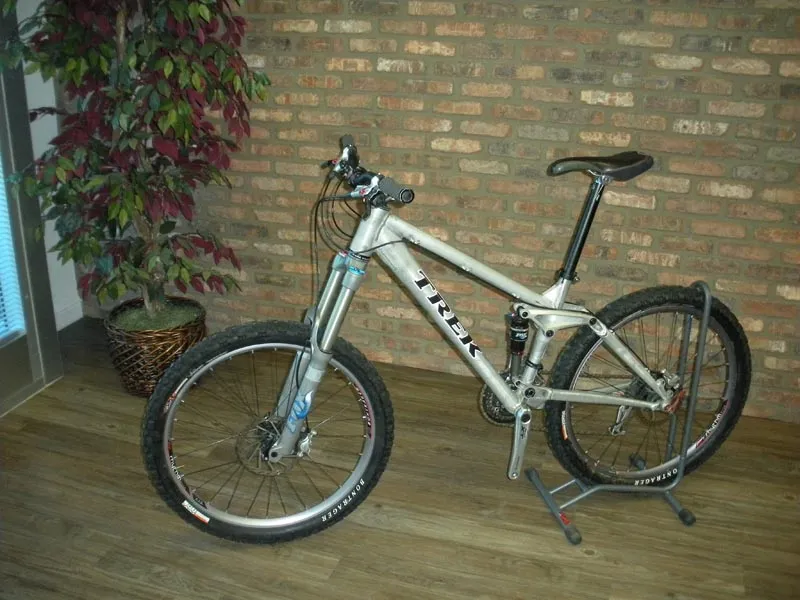
Prototype Trek Remedy.
When we started testing the new Remedy, we were blown away by the performance gain, and that’s when we decided that we needed to start fresh with the Session 8. The original Session 8 was based on a similar design to the Session 10 and had already been released to production engineering for implementation. This was a big decision, because Trek had already put two years of development into this bike.
It was an expensive decision, but well worth it in the end. This was the moment when I realised that I had joined the right company, because it was a true reflection of practising what was preached - uncompromising commitment to market-leading mountain bikes.
Part of the success of Trek’s platforms seems to be the relationship with Fox and your development of shocks such as the DRCV. How do you work with Fox?
We have a very strong and close relationship with Fox. They were a key reason for setting up the suspension research and development facility in northern Los AngelesCounty.
Because we're located where we are, it’s an easy 4.5-hour drive to Fox. This means we can visit as soon as we identify a need and spend whatever time is necessary there to accomplish the task. There's no need to plan the trip, buy flights or be constrained by travel schedules.
Our interactions with Fox vary depending on what we are after. Sometimes, we’ll do a certain amount of ground work before we go to Fox with a tune or design. Other times, we’ll discuss the objective openly and together come up with a direction to pursue/test. In other cases, we give Fox very specific feedback on the tuning of a product and ask for very specific re-tuning to evaluate. If it’s a completely novel design, we are responsible for doing our due diligence before disclosing it to Fox. We also conduct quite a few co-development test camps that include both Trek and Fox engineers.
You designed the DRCV shock with the Gary Fisher Roscoe in mind- how come it wasn’t used on the first Remedy?
DRCV was a year behind the development of the first Remedy. Although we'd identified the need and had begun to work on the technology, DRCV wasn't dialled and fully figured out. The DRCV development was completely independent of any particular bike - we were developing the technology for future application on whatever bike we felt would benefit from the technology.
The introduction of the technology on the Roscoe was based purely on timing. Aaron Mock (Fisher product manager) came to us and let us know that we should start thinking about suspension components and performance characteristics for a 140mm travel trail bike. He wasn't aware that we were working on DRCV, so we said, "You know, we have this new technology that we've been working on and…"
How does the relationship with Gary Fisher Bikes work? Does it feel like you’re taking something away from Trek when you're working for them?
Not really. The bikes have a very different feel and ride, which enables us to offer two different options to our customers. The geometry and suspension feel differ quite a bit between Fisher and Trek. They do share some features, but they still maintain their own personalities.
What’s next for Trek? You must be working on 2012 bikes now.
We just finished most of our 2011 development and it’s now in the release to production phase. We started some 2012 development earlier this year, but the focus was on 2011 until this autumn. Now we're moving away from 2011 and are pretty much focusing on 2012 designs and development.
What technical developments interest you outside Trek, and how do you look at incorporating them into Trek bikes?
As a suspension guy, I have a lot of interest in drivetrain innovation, because it directly influences suspension performance. This is both due to the forces produced by pedalling, which have a pronounced influence on suspension function, and the unsprung weight the drivetrain adds to the rear wheel.
This is one area on a mountain bike that I believe has lagged behind chassis, suspension and brake developments. I think the 2x10 system is a step in the right direction and probably our best option for the near future. Hammerschmidt is even more so, but not in its current form. It needs further refinements for us to commit to it.
Ultimately, the rear derailleur and cassette isn't the best system for use in our environment. it's very prone to contamination, damage and inconsistent performance - plus it adds a lot of unsprung weight. But I’m also a realist and acknowledge that it’s the best option available today.
I also feel that the adjustable height seatpost, such as the Crank Brothers' Joplin, will become a standard of a feature in the future, just as suspension forks are on today’s mountain bikes. The product isn't quite there yet and has a few shortcomings in its current state, but it will get there.
I also see a lot of opportunity to enhance the ride and performance of mountain bikes with tires and wheels, so I see a lot of further development in that area. The 'engine' is limited in output, so these two components can make a big difference.
Finally, we’ve all seen some shocking bikes and components in the past. Tell us about some of your favourites…
Man, we've seen some super strange ideas and designs over the years. There were so many, but being a suspension guy, a few that come to mind are the Softride beam, the Slingshot frame and the flex stem. I could never get the concept of a constantly-changing rider positioning on the bike and a suspension system that did nothing to enhance the vehicle dynamics.
The old Trek 9500 with the super high single pivot rubber bumper shock is up there, too!
